News
8 great places to go snorkeling with seals and sea lions

Snorkeling with seals is one of the most fun underwater experiences of all. These charismatic and curious animals are renowned for coming close to snorkelers, nibbling their fins and creating perfect photographic opportunities. Whether you want to snorkel in Antarctica’s brisk waters with leopard seals, relax in Mexico’s warm waters with sea lions, or take a road trip along Australia’s eastern coast to several top seal swim destinations, you can. Whatever your preference or location, there is a seal or sea lion hotspot just right for you. Read on to find out more.
1) Baja California, Mexico
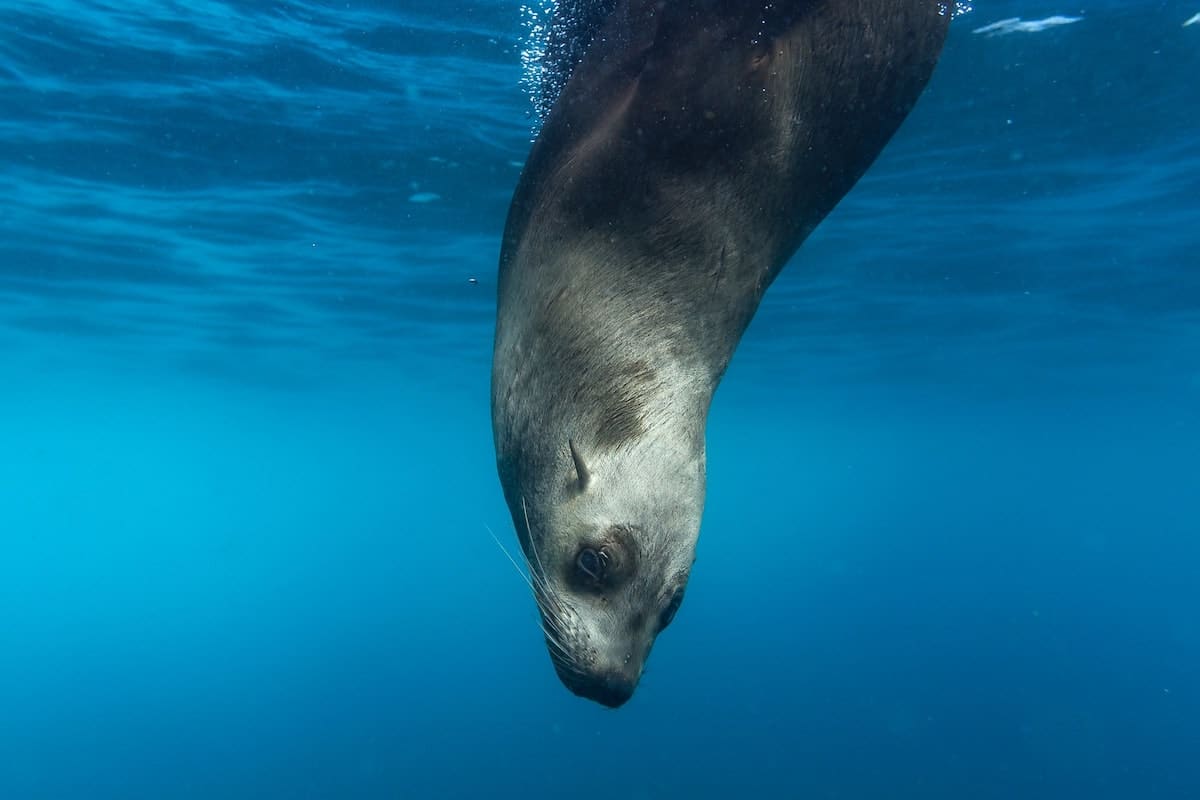
The Sea of Cortez in Baja California is renowned for its fantastic snorkeling, with thriving marine life and vibrant coral reefs in sheltered waters. La Paz, the tranquil capital of Baja California, is fringed by the Sea of Cortez and has a colony of over 200 California sea lions at Los Islotes. It is one of the most popular places to go swimming with sea lions in Mexico. You can also swim with these charming animals at Cabo Pulmo’s Isla San Pedro. Either way, the sea lions are present all year, though you can spot playful pups if you visit in September.
Species: California sea lions.
2) Kaikoura, New Zealand
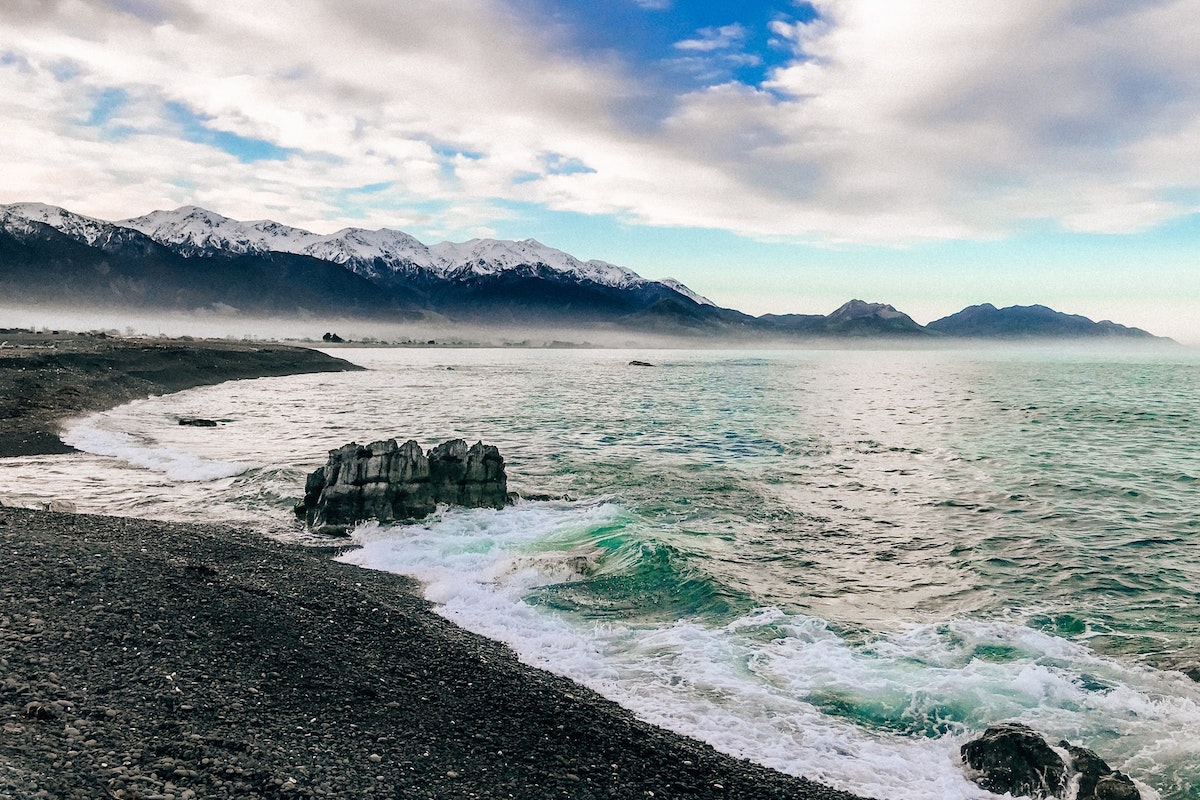
Backed by snow-capped mountains in winter and washed by bright azure waters in summer, Kaikoura is a stunning place to snorkel with seals. Kaikoura’s lush kelp forests are busy with diverse marine life, including plenty of New Zealand fur seals. The nearby continental shelf has created a biodiversity hotspot, where whales, dolphins, sharks and fish life also thrive; making Kaikoura very popular for snorkeling and diving in New Zealand.
Species: New Zealand fur seals.
3) Antarctica
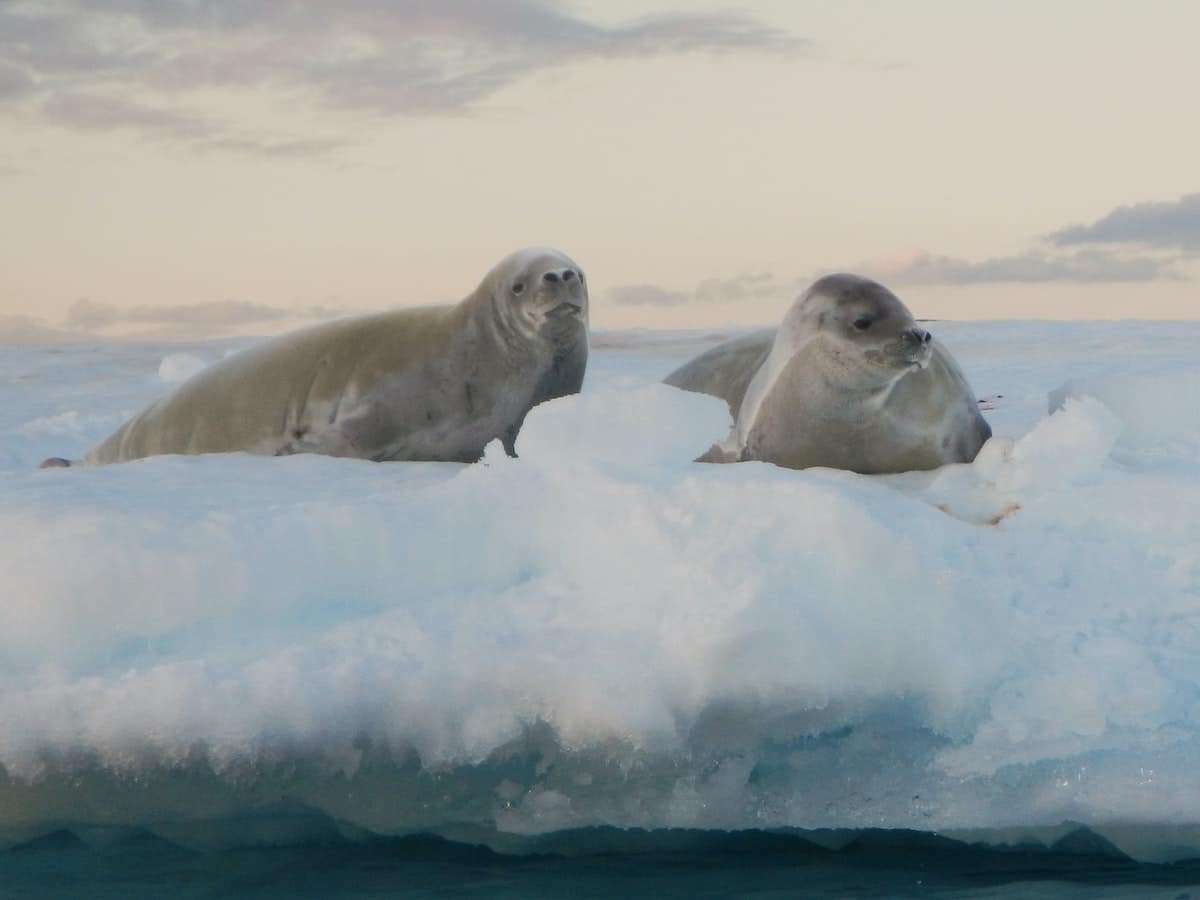
If you want to explore the world’s last untouched wilderness and swim with an iconic apex predator, visit Antarctica. Hop on a cruise boat, wrap up warm, and you will discover a world of clear blue waters with jaw-dropping underwater ice formations. There is an abundance of marine life to see, including impressive leopard seals and up to five other species of seal: Ross, Weddell, crabeater, fur and elephant seals.
Species: Leopard seals.
4) United Kingdom
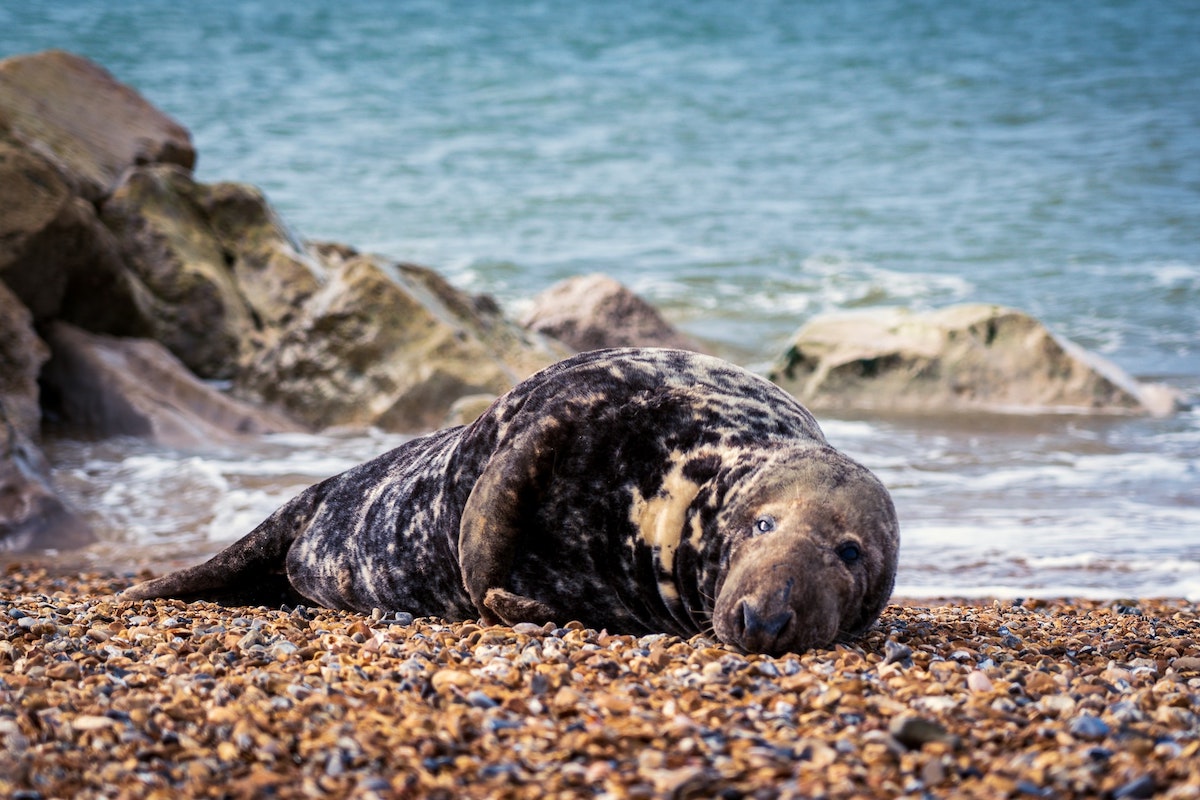
Visit the United Kingdom and you’ll be spoilt for choice when it comes to swimming with seals. This easily-accessible destination is home to some of the best-known places to snorkel with seals and is perfect for a summer getaway.
The Farne Islands off the Northumberland coast are renowned for their puffins and have a population of around 5000 Atlantic grey seals, which you can snorkel with. Sitting in the Bristol Channel off Devon, Lundy Island is a Marine Conservation Zone with a thriving grey seal population and offers summer snorkeling safaris with these beautiful seals. If you want to spend your days lazing on soft white sand beaches and snorkeling with seals, don’t miss a trip to St Martin’s in the Isles of Scilly.
Species: Atlantic grey seals.
5) Western Cape, South Africa
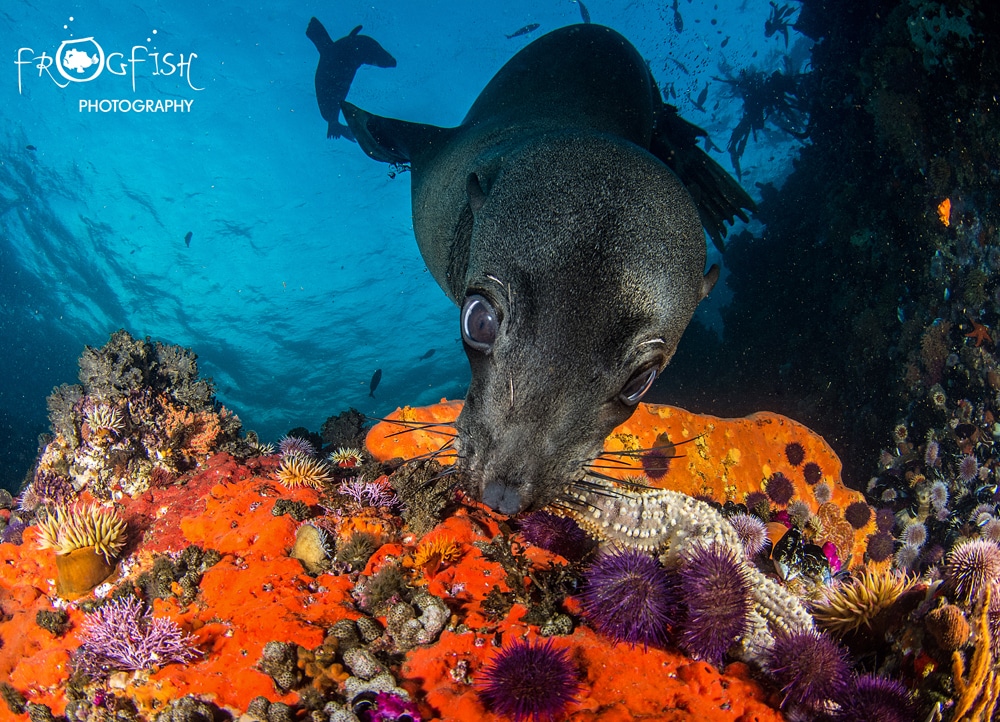
False Bay in the Western Cape, with its rich waters and curving coastline, is a paradise for marine life large and small. It is frequented by numerous whales, sharks, dolphins, orca, thousands of seabirds, and tens of thousands of Cape fur seals. Take a 20-minute boat ride to storm-washed Seal Island to watch the seals frolicking in the water, leaping in the waves and evading the clutches of broadnose sevengill sharks.
If you want to snorkel with these acrobatic animals, you can do so at Duiker Island in Hout Bay and from Simon’s Town in False Bay. These seals are known for coming close to snorkelers, checking you out as they pass by, so make sure you take your camera. Afterwards, you can enjoy the fantastic food, wine and culture that Cape Town is known for.
Species: Cape fur seals.
6) Hornby Island, Canada

People flock to Hornby Island’s shores every winter to go swimming with Steller sea lions. These huge sea lions can weigh up to 2,500 pounds and are an impressive sight in the clear cool waters off Hornby Island. Stay on Hornby Island and you can swim with these sea lions, as well as California sea lions during winter and Harbour seals year-round. Known as the ‘Little Hawaii’ of Canada, Hornby Island is also known for its glorious white sand beaches and excellent diving.
Species: Steller sea lions, Harbour seals, California sea lions.
7) Galapagos Islands, Ecuador
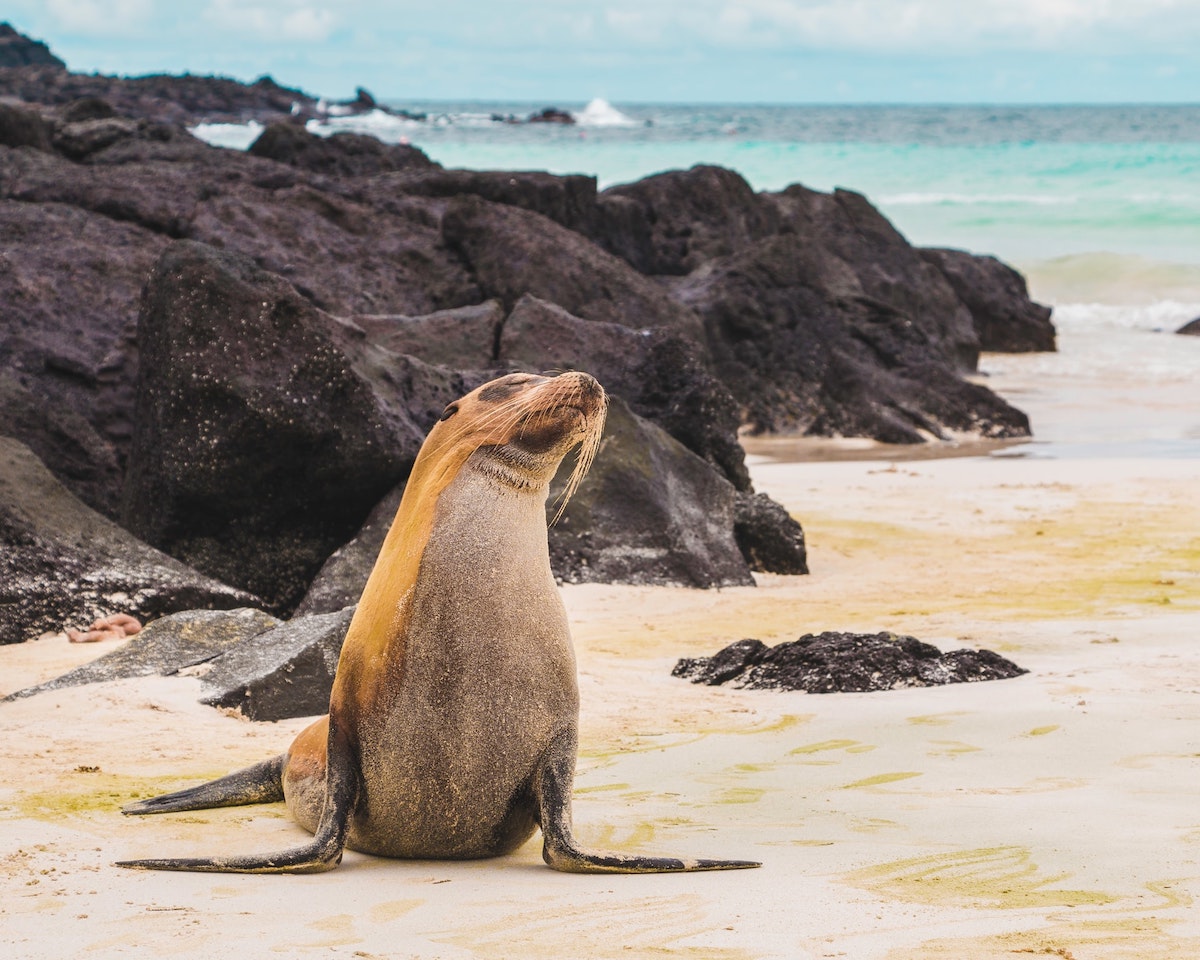
Galapagos diving is a bucket list activity for any underwater naturalist, but you don’t need to be a certified diver to make the most of this incredible destination. There are countless wildlife spotting opportunities above water and these remote islands offer world-class snorkeling as well.
Rich in nutrients, the waters off these famous oceanic islands are teeming with life and offer an experience like no other. You can snorkel with both Galapagos sea lions and seals there, plus huge shoals of fish, sea turtles, sharks and more.
Species: Galapagos fur seals, Galapagos sea lions.
8) Australia
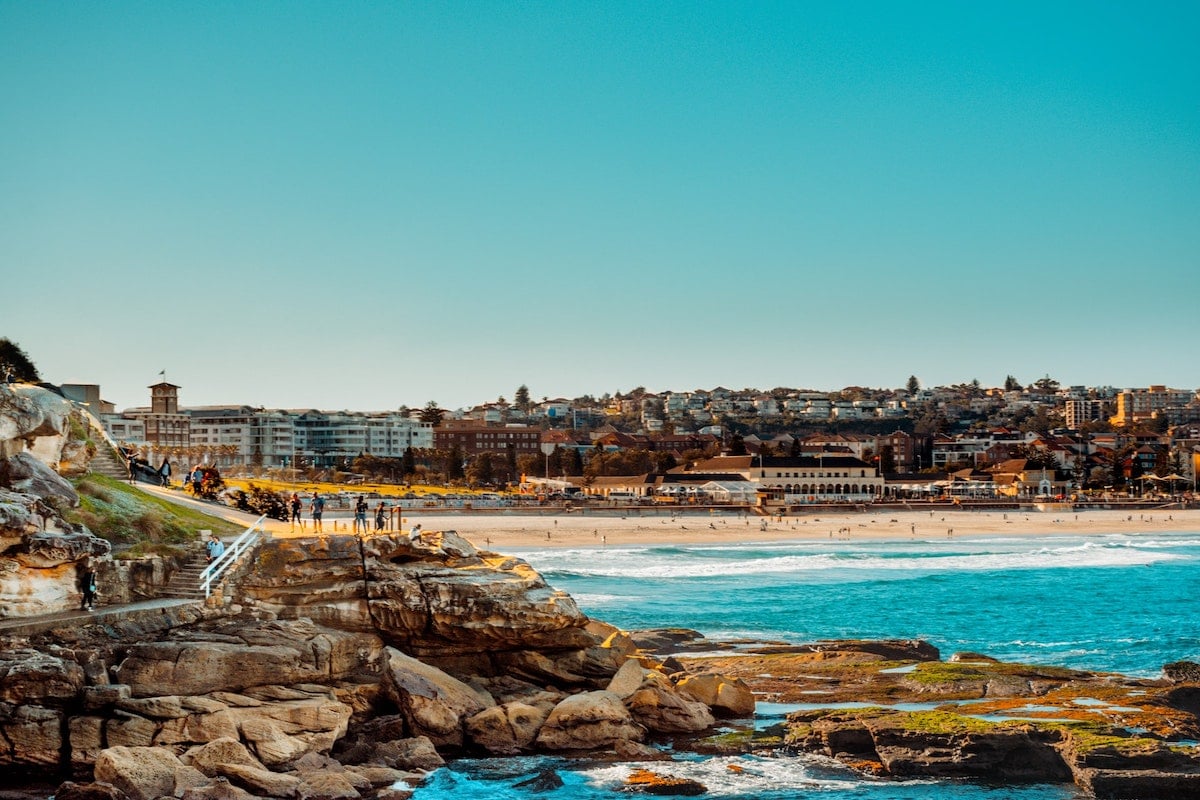
When it comes to year-round sunshine destinations with wildlife experiences for the whole family, it’s hard to beat Australia. There are idyllic destinations strewn along the eastern coast, where you can swim with seals and enjoy world-class snorkeling, so plan a road trip and enjoy!
Montague Island in New South Wales hosts both Australian and New Zealand fur seals and has a colony of little penguins as well. Take a trip to the island to explore the lighthouse, visit the island’s significant Aboriginal sites, and snorkel with fur seals in clear turquoise waters.
Head north to Jervis Bay to swim with Australian fur seals and humpback whales in sheltered waters. September to October is the peak season for swimming with the whales and the fur seals are resident all year.
Continue on to Sydney to enjoy the surf culture and beaches of this famous Australian city, then hop on a flight to Cairns to snorkel or dive the Great Barrier Reef. This enormous reef system might not have seals, but with over 1500 fish species and one-third of the world’s soft corals, it is an unmissable highlight of any Australia vacation.
Species: Australian fur seals, New Zealand fur seals.
Kathryn Curzon, a shark conservationist and dive travel writer for Scuba Schools International (SSI), wrote this article.
News
Book Review: Fire on Monroe Bravo by Fred Lockwood

Fire on Monroe Bravo is the latest book in the Jack Collier series by Fred Lockwood. Our story begins with our lead characters, Jack and Sandro, owners of Marine Salvage & Investigation Company, arriving on the Monroe Bravo Oil & Gas Platform in the North Sea. Having secured a contract for their vessel the MV Stavanger to act as support ship to the platform for TransGlobal Oil, our protagonists are on a celebratory visit.
However almost as soon as they arrive a series of explosions rock the platform, causing huge damage, loss of life and the very real danger of a massive human, ecological and financial disaster.

As the danger mounts for both our heroes and the surviving workers, Jack and Sandro will have to escape the inferno, all while trying to save the platform and the men still trapped unable to help themselves.
The disaster sets the scene for the unfolding story lines following the fate of the platform and our main characters, the police investigation into a suspected terrorist act and the actions of TransGlobal Oil as they attempt to navigate the pubic outcry and financial repercussions.
In his eighth book, Fire on Monroe Bravo, Fred Lockwood delivers an explosive thriller, with plenty of above and in-water drama, and our heroes fighting for survival, what more can you ask for?
We thoroughly recommend this read and look forward to the next in the series. For more information about his book series, you can check out the reviews of his previous books here on Scubaverse.
- Title: Fire On Monroe Bravo
- Author: Fred Lockwood
- ISBN: 979-8325324536
Available in a paperback version and for Kindle from Amazon and book stores.
Blogs
Alonissos: The complete diving destination (Part 1)

In June we were incredibly fortunate to be invited to dive in Alonissos, a small Greek Island in the Sporades island chain located in the North Aegean Sea. While I have long been a big fan of the Greek Islands as a great holiday destination, I had not had the opportunity to do any diving on previous visits and Mike and I were extremely excited to see what Alonissos had to offer both above and below the surface!

The Sporades are easily accessible via the airport in Skiathos (the first island in the chain), which is served by Jet2 flights from all major UK airports from May through October. Numerous ferries and charter boats make island hopping from Skiathos Town a breeze. After an hour boat ride, the picturesque port of Patitiri was a wonderful introduction to Alonissos, where we were met by our gracious hosts Kostas of Albedo Travel and Dias of Alonissos Triton Dive Center. Mike and I were delighted to be staying at the Paradise Hotel, aptly named for its stunning views over the sea and great location for walking to the waterfront.

Alonissos is beautifully situated in the National Marine Park of Alonissos and the Northern Sporades, the largest marine protected area in Europe. The surrounding seas offer fabulous marine life, including incredibly rare species such as the Mediterranean monk seal. They boast deep walls covered in gorgonians and sponges, stunning topography with caverns, swimthroughs and pinnacles, and the first accessible ancient shipwreck from 500BC!

In locations where historical sites have been reported, the waters are largely restricted, but with collaboration between government, underwater archeologists and dive centres, incredible underwater museums are being created for a truly unique diving experience. Alonissos is home to the first of these, the Ancient Shipwreck of Peristera Accessible Underwater Archeological Site. The chance to dive into history (along with reports of healthy reef life and amazing underwater topography) meant Mike and I were keen to get in the water.

Our introduction to the diving around Alonissos was at the Agios Georgios Pinnacles, in the channel between Alonissos and Skopelos. This fantastic site was named “The Chimney,’ and proved to have a huge amount to see. We got to a decent depth here (over 25m), and marvelled at a colourful reef wall with a wonderful swim through whose rocky walls were absolutely covered with life. As well as brilliant topography there was no shortage of macro life here. We saw numerous nudibranchs, five different species in total. The second dive at Mourtias reef nearby was a shallower dive along a nice wall with lots of crevices. Several moray eels and grouper called this site home. We enjoyed looking in the crevices for lobster and smaller benthic life, such as cup corals and tunicates.

Our itinerary allowed us two dives a day with afternoons left to explore the island with our hire car and evenings to enjoy the famous Greek hospitality. This proved to be a lovely mix of in-water and land based diversions.

The next days diving to the Gorgonian Gardens and Triton’s Cave was to be even better! These two stunning sites are nothing short of fabulous. The Gorgonian Gardens was a deep wall near to the Agios Georgios islands. The ever-present currents in this deep channel meant that the sea life was amazing … the namesake Gorgonian sea fans dotted the wall at a depth of 30 to 50 meters, getting ever larger the deeper we went. Above 30m was by no means less beautiful, with sponges, corals, scorpionfish, moray eels and some rare and colourful nudibranchs.

The second shallower dive of the day was to Triton’s Cave or the Cavern of Skopelos, on the east side of that island. The spectacular rock formations had wild striations both above and below the water making a truly epic topography. The cavern entrance was at 14m, and big enough for a buddy pair, winding up to 6m and passing two beautiful windows out into the blue. Emerging from the cavern, the light at the shallower depths and the incredible rock formations made for a fantastic gentle swimming safety stop and we all surfaced by the boat with massive grins.

Check out our next blog :Alonissos: The complete diving destination (Part 2)” to hear about our amazing dive on the 2500 year old Peristera Wreck!
Thanks to:
Alonissos Triton Dive Center https://bestdivingingreece.com/
Albedo Travel https://alonissosholidays.com/activities/
Paradise Hotel https://paradise-hotel.gr/
Alonissos Municipality https://alonissos.gr/en/
-

 Blogs2 months ago
Blogs2 months agoDiving With… Nico, Ocean Earth Travels, Indonesia
-

 News1 month ago
News1 month agoMurex Bangka Announce New Oceanfront Cottages & Beachfront Dining
-

 Blogs2 months ago
Blogs2 months agoA new idea in freediving from RAID
-

 Marine Life & Conservation1 month ago
Marine Life & Conservation1 month agoIceland issue millionaire whale hunter a licence to murder 128 vulnerable fin whales
-

 Marine Life & Conservation2 months ago
Marine Life & Conservation2 months agoThe Shark Trust Great Shark Snapshot is back
-

 News3 months ago
News3 months agoCharting New Waters; NovoScuba Goes Global with the Launch of their Revolutionary Dive Training Agency!
-

 Gear News1 month ago
Gear News1 month agoNew Suunto Ocean – a dive computer and GPS sports watch in one for adventures below and above the surface
-

 Marine Life & Conservation Blogs2 months ago
Marine Life & Conservation Blogs2 months agoBook Review: Plankton















